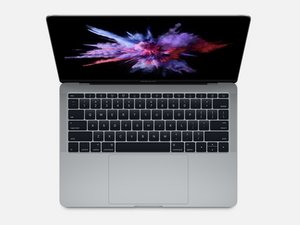I call this effect pixel lice as the video buffer RAM is failing or there is noise within the T-CON board.
The different model series use different memory setups. In the Intel models we have either iGPU (Intel CPU graphics) or dedicated GPU's mostly AMD these days.
The Intel based systems carve out a bit of main RAM as the buffer space and within the AMD models dedicated RAM.
Now to make your head spin! The AMD chip isn't used during startup and only pressed into service when a given App calls for it. With nothing running other that the OS will be using the Intel graphics so if you are seeing pixel lice just within the desktop that's a bad T-CON board. If you see the pixel lice when running a heavy graphics game or task like video editing that's a dedicated RAM failure often it's a bad solder joint on the RAM chips.
Of course the T-CON is often where the failure is, as it's part of the display within the lid or just dangling as in this series there is not much you can fix. If you have some spare parts you might be able to replace if you can identify the failed component. It's both simpler and cheaper just replacing the display.
crwdns2934105:0crwdne2934105:0
crwdns2934113:0crwdne2934113:0
crwdns2915270:0crwdne2915270:0
crwdns2889612:0crwdne2889612:0
0


 1
1 
 338
338  973
973
crwdns2944067:02crwdne2944067:0
@danj Is this a sign that the Internal graphics are failing? As I have also noticed this happen on an older Macbook model that I had here recently......? The internal display not working can be the flexgate issue https://www.lappymaker.com/blog/flexgate...
crwdns2934271:0crwdnd2934271:0 livfe crwdne2934271:0
@livfe - This is not a FlexGate issue (backlight failure) or some other version of it effecting the video. From 2016 onwards the logic board pumps out iDP or eDP signaling to the display to then convert to the raster image (T-CON). Pixel lice is either within the RAM or at the T-CON not in the transmission between.
crwdns2934271:0crwdnd2934271:0 Dan crwdne2934271:0